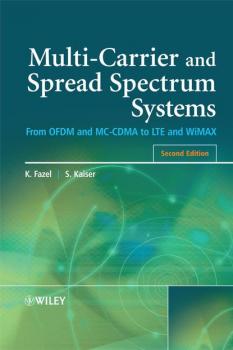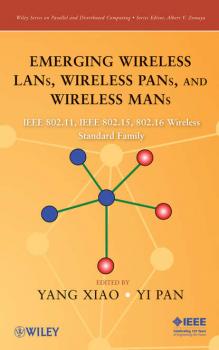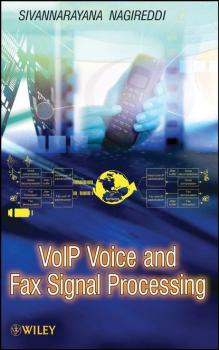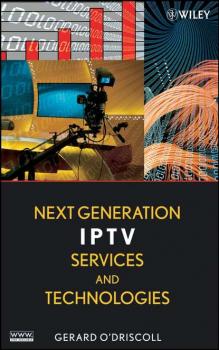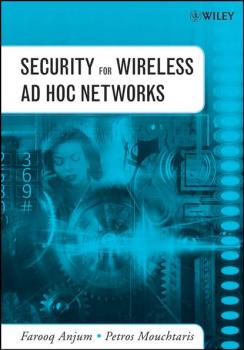ТОП просматриваемых книг сайта:
Техническая литература
Различные книги в жанре Техническая литература, доступные для чтения и скачиванияАннотация
The technological progress in multi-carrier (MC) modulation led orthogonal frequency division multiplexing (OFDM) to become an important part of beyond 3G cellular mobile communication standards, including LTE and WiMAX. In addition, the flexibility offered by the spread spectrum (SS) and time division multiplexing (TDM) techniques motivated many researchers to investigate several MC combined multiple access schemes, such as MC-CDMA, OFDMA and MC-TDMA. These schemes benefit from the advantages of each sub-system and offer high flexibility, high spectral efficiency, simple detection strategies and narrow-band interference rejection capability. Multi-Carrier and Spread Spectrum Systems is one of the first books to describe and analyze the basic concepts of multi-carrier OFDM transmission and its combination with spread spectrum (MC-CDMA). The different architectures and detection strategies as well as baseband-related transceiver components are explained. This includes topics like FEC channel coding and decoding, modulation and demodulation (IFFT/FFT), digital I/Q-generation, time and frequency synchronisation, channel estimation, frequency domain equalization and RF aspects such as phase noise and non-linearity issues. Concrete examples of its applications for cellular mobile communication systems (B3G/4G) are given. Further derivatives of MC-SS (such as OFDMA, SS-MC-MA and DFT-spread OFDM) and their corresponding applications in the LTE, WiMAX, WLAN and DVB-RCT standards are detailed. Capacity and flexibility enhancements of multi-carrier OFDM systems by different MIMO diversity techniques such as space time/frequency coding (STC, SFC) and software defined radio concepts are also described. Written in a highly accessible manner this book provides a unique reference on the topics of multi-carrier and spread spectrum communications, assisting 4G engineers with their implementation. Fully updated new edition of successful text, including two new chapters on LTE and WiMAX Describes in detail new applications of OFDM in mobile communication standards Examines all multi-carrier spread spectrum schemes, with in-depth analysis, from theory to practice Introduces the essentials of important wireless standards based on multi-carrier/spread spectrum techniques.
Аннотация
This book provides an in-depth guide to security in wireless ad hoc and sensor networks Security in Wireless Ad Hoc and Sensor Networks introduces the reader to the fundamentals and key issues related to wireless ad hoc networking, with an emphasis on security. It discusses the security attacks and counter measures in wireless ad hoc, sensor and mesh networks, and briefly presents the standards on related topics. The authors offer a clear exposition of various challenges and solutions in this field including bootstrapping, key distribution and exchange, authentication issues, privacy, anonymity and tamper resilience. Key Features: Introduces the fundamentals and key issues of the new technologies followed by comprehensive presentation on security attacks and counter measures Covers Denial of Service (DoS) attacks, hardware aspects of secure wireless ad hoc and sensor networks and secure routing Contains information on cryptographic primitives and electronic warfare Includes problems at the end of each chapter to enhance learning. This book is well suited for graduate students in computer, electrical and communications engineering and computer science departments, researchers in academia and industry, as well as C4I engineers and officers in the military. Wireless network designers for internet service providers and mobile communications operators will also find this book very useful.
Аннотация
A thoroughly up-to-date resource on IEEE 802 wireless standards Readers can turn to this book for complete coverage of the current and emerging IEEE 802 wireless standards/drafts, including: 802.11 Wireless LANs 802.15.1 Bluetooth and 801.15.2 802.15.3 Wireless PANs 802.15.4 and 802.15.5 Wireless PANs 802.16 Wireless MANs Emerging Wireless LANs, Wireless PANs, and Wireless MANs is a unique, convenient resource for engineers, scientists, and researchers in academia and industry. It also serves as a valuable textbook for related courses at the upper-undergraduate and graduate levels.
Аннотация
A one-stop resource for the use of algorithms and protocols in wireless sensor networks From an established international researcher in the field, this edited volume provides readers with comprehensive coverage of the fundamental algorithms and protocols for wireless sensor networks. It identifies the research that needs to be conducted on a number of levels to design and assess the deployment of wireless sensor networks, and provides an in-depth analysis of the development of the next generation of heterogeneous wireless sensor networks. Divided into nineteen succinct chapters, the book covers: mobility management and resource allocation algorithms; communication models; energy and power consumption algorithms; performance modeling and simulation; authentication and reputation mechanisms; algorithms for wireless sensor and mesh networks; and algorithm methods for pervasive and ubiquitous computing; among other topics. Complete with a set of challenging exercises, this book is a valuable resource for electrical engineers, computer engineers, network engineers, and computer science specialists. Useful for instructors and students alike, Algorithms and Protocols for Wireless Sensor Networks is an ideal textbook for advanced undergraduate and graduate courses in computer science, electrical engineering,and network engineering.
Аннотация
A complete and systematic treatment of signal processing for VoIP voice and fax This book presents a consolidated view and basic approach to signal processing for VoIP voice and fax solutions. It provides readers with complete coverage of the topic, from how things work in voice and fax modules, to signal processing aspects, implementation, and testing. Beginning with an overview of VoIP infrastructure, interfaces, and signals, the book systematically covers: Voice compression Packet loss concealment techniques DTMF detection, generation, and rejection Wideband voice modules operation VoIP Voice-Network bit rate calculations VoIP voice testing Fax over IP and modem over IP Country deviations of PSTN mapped to VoIP VoIP on different processors and architectures Generic VAD-CNG for waveform codecs Echo cancellation Caller ID features in VoIP Packetization—RTP, RTCP, and jitter buffer Clock sources for VoIP applications Fax operation on PSTN, modulations, and fax messages Fax over IP payload formats and bit rate calculations Voice packets jitter with large data packets VoIP voice quality Over 100 questions and answers on voice and more than seventy questions and answers on fax are provided at the back of the book to reinforce the topics covered throughout the text. Additionally, several clarification, interpretation, and discussion sections are included in selected chapters to aide in readers' comprehension. VoIP Voice and Fax Signal Processing is an indispensable resource for professional electrical engineers, voice and fax solution developers, product and deployment support teams, quality assurance and test engineers, and computer engineers. It also serves as a valuable textbook for graduate-level students in electrical engineering and computer engineering courses.
Аннотация
This handbook provides an accessible overview of the most important issues in information and computer ethics. It covers: foundational issues and methodological frameworks; theoretical issues affecting property, privacy, anonymity, and security; professional issues and the information-related professions; responsibility issues and risk assessment; regulatory issues and challenges; access and equity issues. Each chapter explains and evaluates the central positions and arguments on the respective issues, and ends with a bibliography that identifies the most important supplements available on the topic.
Аннотация
With a focus on changing job tasks and knowledge requirements for professionals, this book enables readers to meet the demands of designing, implementing, and supporting end-to-end IPTV systems. Additionally, it examines IPTV technical subjects that are not included in any other single reference to date: Quality of Experience (QoE), techniques for speeding up IPTV channel changing times, IPTV CD software architecture, Whole Home Media Networking (WHMN), IP-based high-definition TV, interactive IPTV applications, and the daily management of IPTV networks.
Аннотация
This book addresses the problems and brings solutions to the security issues of ad-hoc networks. Topics included are threat attacks and vulnerabilities, basic cryptography mechanisms, authentication, secure routing, firewalls, security policy management, and future developments. An Instructor Support FTP site is available from the Wiley editorial board.
Аннотация
Topology control is fundamental to solving scalability and capacity problems in large-scale wireless ad hoc and sensor networks. Forthcoming wireless multi-hop networks such as ad hoc and sensor networks will allow network nodes to control the communication topology by choosing their transmitting ranges. Briefly, topology control (TC) is the art of co-ordinating nodes’ decisions regarding their transmitting ranges, to generate a network with the desired features. Building an optimized network topology helps surpass the prevalent scalability and capacity problems. Topology Control in Wireless Ad Hoc and Sensor Networks makes the case for topology control and provides an exhaustive coverage of TC techniques in wireless ad hoc and sensor networks, considering both stationary networks, to which most of the existing solutions are tailored, and mobile networks. The author introduces a new taxonomy of topology control and gives a full explication of the applications and challenges of this important topic. Topology Control in Wireless Ad Hoc and Sensor Networks: Defines topology control and explains its necessity, considering both stationary and mobile networks. Describes the most representative TC protocols and their performance. Covers the critical transmitting range for stationary and mobile networks, topology optimization problems such as energy efficiency, and distributed topology control. Discusses implementation and ‘open issues’, including realistic models and the effect of multi-hop data traffic. Presents a case study on routing protocol design, to demonstrate how TC can ease the design of cooperative routing protocols. This invaluable text will provide graduate students in Computer Science, Electrical and Computer Engineering, Applied Mathematics and Physics, researchers in the field of ad hoc networking, and professionals in wireless telecoms as well as networking system developers with a single reference resource on topology control.
Аннотация
A highly practical guide rooted in theory to include the necessary background for taking the reader through the planning, implementation and management stages for each type of cellular network. Present day cellular networks are a mixture of the technologies like GSM, EGPRS and WCDMA. They even contain features of the technologies that will lead us to the fourth generation networks. Designing and optimising these complex networks requires much deeper understanding. Advanced Cellular Network Planning and Optimisation presents radio, transmission and core network planning and optimisation aspects for GSM, EGPRS and WCDMA networks with focus on practical aspects of the field. Experts from each of the domains have brought their experiences under one book making it an essential read for design practitioners, experts, scientists and students working in the cellular industry. Key Highlights Focus on radio, transmission and core network planning and optimisation Covers GSM, EGPRS, WCDMA network planning & optimisation Gives an introduction to the networks/technologies beyond WCDMA, and explores its current status and future potential Examines the full range of potential scenarios and problems faced by those who design cellular networks and provides advice and solutions all backed up with real-world examples This text will serve as a handbook to anyone engaged in the design, deployment, performance and business of Cellular Networks. «Efficient planning and optimization of mobile networks are key to guarantee superior quality of service and user experience. They also form the essential foundation for the success of future technology development, making this book a valuable read on the road towards 4G.» —Tero Ojanperä, Chief Technology Officer, Nokia Networks

